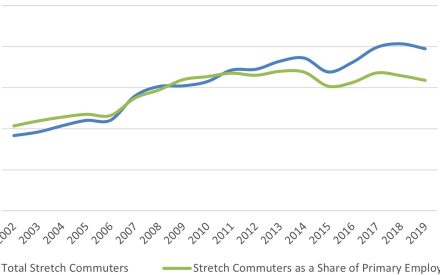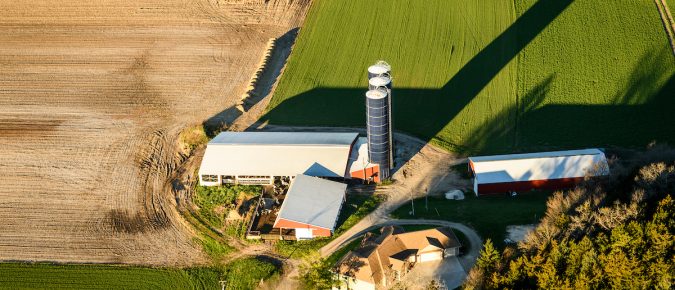Publications
Journal Articles
Internal Publications
WIndicators: Labor Shortages, Productivity, and Economic Growth in Wisconsin
Following a national trend, Wisconsin is experiencing a structural labor shortage: there are not enough qualified workers to fill available jobs. From January 2021 through February 2025, the state averaged 190,180 job openings per month, while only 97,081 individuals were unemployed resulting in an average monthly shortfall of 93,099 workers. This imbalance, combined with low unemployment and declining labor force participation, means that while job seekers may have an easier time finding work, there are simply not enough people actively seeking employment to meet demand. Contributing factors include an aging population, childcare and eldercare responsibilities (which disproportionately impact women), and a mismatch between the skills of available workers and the requirements of open positions.
WIndicators: The Impact of Housing Financial Stress on Community Well-Being
Housing affordability is a growing concern across Wisconsin and the U.S. at large. Housing costs continue to rise while affordable options are getting harder to find and while job earnings have grown, earnings have failed to keep pace with housing costs. The result is that many households are struggling to keep up with the increasing cost of housing, leading to housing financial stress and increasing instability. While there is no widely accepted measure of housing financial stress, a common method uses a threshold of spending more than 30% of their income on housing. The number of households in the United States and Wisconsin spending over 30% of their income on housing is steadily increasing with no signs of slowing down.
Special Features on Black, Latino, Asian, and Native Owned Businesses in Wisconsin
Wisconsin follows the nationwide trend of a relatively small yet growing number of diverse business owners. This recent growth suggests a promising and economically important future for diverse business owners despite evidence that they face significant challenges.
WIndicators: Understanding Wisconsin Prosperity in the National Context
In this WIndicator we focus on a relatively simple measure of prosperity to gain insight on the broader question of livability and contribute to ongoing local discussions. We explored patterns of place prosperity across four distinct dimensions: poverty, unemployment, housing, and education. Our analysis includes all U.S. counties and extends over time across three decades.
WIndicators: Wisconsin Farming: Insights from the 2022 Census of Agriculture
Every five years the United States Department of Agriculture (USDA) undertakes a detailed inventory of farming operations across the country. The most recent, the 2022 Census of Agriculture, aims to provide a detailed snapshot of the nation’s farming economy, including information on farm demographics, production practices, land use, and economic trends. The intent of this issue of WIndicator is to provide an overview of recent trends in Wisconsin farming using the Census of Agriculture. We pay particular attention to the changes since the last Census in 2017 to understand trends in key metrics for Wisconsin agriculture with some references to longer term trends (1997 to 2022).
WIndicators: The Role of Childcare in the Labor Market: A Long-Run Perspective
There are a number of factors feeding into the current labor shortage, and while the problem seemed to accelerate after the COVID-19 pandemic, we have been facing a downward trend in unemployment for over a decade.
Business Owners of Color in Wisconsin: Representation, Profitability, and Growth
Wisconsin follows the nationwide trend of a relatively small yet growing number of diverse business owners. This recent growth suggests a promising and economically important future for diverse business owners despite evidence that they face significant challenges.
Willingness to Pay for Broadband Internet
The UW-Madison EDA University Center conducted a statewide survey of Wisconsin residents on broadband access and affordability, with the goal of estimating the willingness to pay for broadband. As the state makes significant investments in broadband infrastructure, attention is shifting to the willingness, or ability, of people, particularly lower income people, to pay for broadband subscriptions.
A Trade Area Analysis of Wisconsin Retail and Service Markets: Updated for 2022
Using 2022 county sales tax data, we examine the strength and weaknesses of Wisconsin retail and service markets through the application of the tools of Trade Area Analysis.
WIndicators: Contributions of Veterans to the Wisconsin Economy
One long-held strategy to foster economic growth and development is to recapture tax dollars that flow to higher units of government. Paying taxes to higher units of government, such as the state and/or federal government, is a leakage from the local economy. In a sense, these leakages are akin to a local business buying inputs from vendors outside of the community or local residents shopping outside of the community. While many communities strike to close these leakages by encouraging firms and shoppers to buy locally, such an approach does not apply to state and federal taxes. Rather, communities often strive to have those dollars returned to the community through local state and federal government spending.
A Trade Area Analysis of Wisconsin Retail and Service Markets: Updated for 2021
Using 2021 county sales tax data, we examine the strength and weaknesses of Wisconsin retail and service markets through the application of the tools of Trade Area Analysis. Only those counties that have elected to collect the optional county sales tax are included in the analysis. Because sales tax data are used one must keep in mind that the analysis focuses only on taxable sales and may not reflect the total level of activity in the county. Using Pull Factors and measures of Surplus and Leakage the relative strengths, and weaknesses, of local retail and service markets are identified.
WIndicators: Understanding and Mobilizing the Potential of Entrepreneurs of Color in Wisconsin
People of color are starting and growing businesses at high rates in Wisconsin. This study explored the experiences of BIPOC entrepreneurs in Fond du Lac County through 1-1 interviews and the Community Capitals Framework (CCF). Business owners expressed satisfaction with the natural beauty and safety of the area while describing limited technical knowledge (human capital), networks (social capital), and financial capital in the critical startup phase of their entrepreneurship. Business development technicians and educators can use this study to better support entrepreneurs of color in their Wisconsin communities.






















